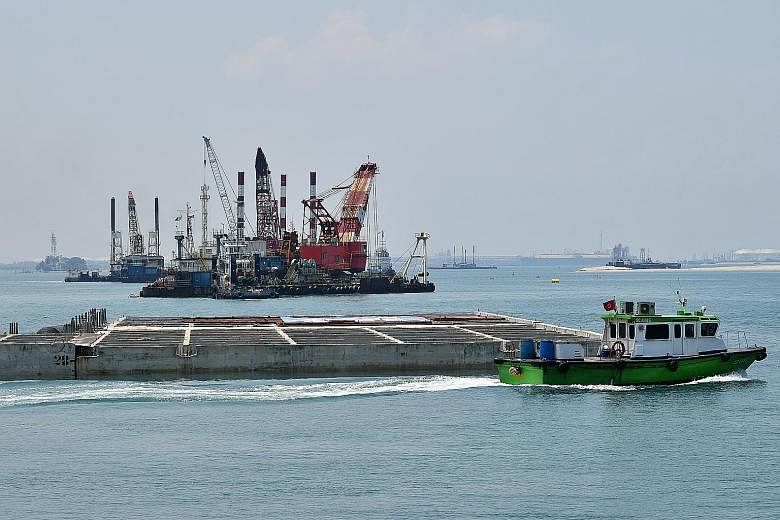Reclamation works for the first phase of the Tuas port are three-quarters complete, with the last of the caissons - 15,000-tonne structures that form wharves - installed yesterday afternoon.
The installation of the 221st structure - the caissons make up some 8.6km of seawalls at Tuas - puts the construction of the first phase of the mega-port on course to be completed in 2021.
The Maritime and Port Authority of Singapore (MPA) is on track to hand over the land required for PSA Corporation to start building container terminals, with the first two berths to start operating by 2021, said MPA chief executive Quah Ley Hoon at the event.
She said the first phase - a $2.42 billion project undertaken by Diap-Daelim, a joint venture between Belgian firm Dredging International Asia Pacific and South Korean company Daelim Industrial - will have 21 deep-water berths.
This will allow it to handle about 20 million 20ft equivalent units (TEUs) of cargo annually when it is fully operational in 2027.
Among the innovations used in the construction process was the Temarock, a rock mound construction vessel developed for the Tuas project by Diap-Daelim.
Caissons are typically placed on rock mounds on the sea floor.
These rock mounds would usually require four vessels, 45 workers - including divers - and up to 132 hours to build for a project as big as the first phase of the Tuas port.
Instead, the Temarock does the work of all four vessels, and it took just 66 hours to construct the rock mounds with only eight workers, without the need for divers.
A special machine was also used to bend and cut reinforcement steel bars, which are used to strengthen concrete. The process is usually done manually, exposing workers to hazards.
Solutions such as these helped make the construction work safer and more efficient, said Ms Quah.
Efforts were also made to reduce the amount of sand used, said MPA engineering and project management director Tham Wai Wah.
Reusing excavated earth from other construction projects helped reduce the amount of sand needed by about 70 per cent for the first phase, and by about 50 per cent for the second phase, scheduled for completion by 2027. This has also helped save about $2 billion.
Transport Minister Khaw Boon Wan, who witnessed the installation of the final caisson, congratulated the engineering team and commended their spirit of innovation.
When fully operational in the 2040s, the new port will replace existing facilities in Tanjong Pagar, Pasir Panjang, Keppel and Pulau Brani.
Expected to be the largest single-container terminal in the world, the Tuas port will eventually be able to handle some 65 million TEUs a year.



